Design tools and the shift to engineering-centric workflows
Utilities are engaged in a complex balancing act in which next-generation design, modeling and visualization tools are playing an increasingly important role. Recent initiatives at Duke Energy and Southern California Edison provide good examples of challenges being addressed by leading utilities through their deployments of new design tools.
Related trends have been confirmed more widely through 31 interviews of North American and European utility decision makers as part of a McDonnell Group research project in late 2012.
The conversation about the importance of utilities’ design tool improvements is shifting from software-centric to engineering-centric concerns.
One utility’s research participant echoed statements made by many others regarding the history behind the utility industry’s shift:
“In the 1990’s with early systems such as AM/FM and GIS, we basically duplicated a paper process. The software solutions back then were such a big efficiency improvement, we did not have to be as process oriented. Now we are advancing our engineering processes, and getting a next-generation set of benefits by operationalizing best practices instead of using IT to automate paper processes.”
Panelist presentations from Arnold W. Fry, Manager, Engineering Standards Transmission Asset Management with Duke Energy, Debra Brooks, PoLAR Project Manager at Southern California Edison, and McDonnell Group highlight these and related developments at a session at the DistribuTECH 2013 Conference with an interesting title: Hand That New Kid a Mouse Glove: Intelligent Modeling and Visualization Tools for Enterprise Work Flow Optimization.1
Utility design and engineering staff need not wear a mouse glove like Tom Cruise in the movie Minority Report but they need tools to optimize design, O&M workflows and related compliance tracking as well as customer service. At the same time utilities need to support the influx of younger, tech-savvy personnel who are an important part of the changing landscape at T&D and substation departments. With all of these converging needs, technology is helping to close the gap by becoming more and more intelligent in interaction and visibility; and some of the capabilities - once only imagined in a design department – is not as far as one might think from the imaginations of Hollywood today.
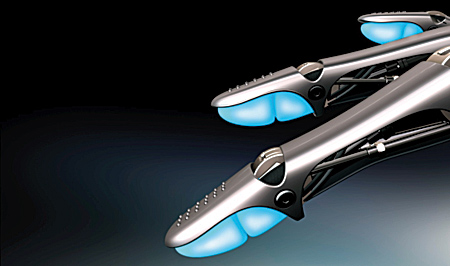
Modeling and visualization – keys to striking a balance
What are utilities seeking to balance? They have to optimize their financial and service performance while improving numerous workflows and addressing critical workforce issues at the same time. The use of next-generation intelligent, model-based design and visualization tools helps ensure the more rapid recruitment and training of the younger generation of knowledge workers coming on board. As one research participant stated:
“As you get new engineers coming on board, if you have a really strong design system and you have good compatible units they become productive much sooner, instead of it taking two years for them figure out how we design our distribution system. We can use the technology to build the institutional knowledge into the application. So when they sit down at their desk they have all that knowledge built into it instead of their having to learn at the knee of a more experienced engineer.”
The use of the latest tools also contributes to the longer-term retention of tech-savvy employees, and sets the stage for their greater contributions to enterprise-wise improvements.
It is important to highlight the role played by modeling, design, and visualization tools in creating better processes and setting the stage for breakthrough insights. Models help us to solve problems. But model-based ideas are such a basic aspect of how engineers think it is easy for those of us who are engineers to take them for granted. Worse yet, non-engineers in positions of utility management both in and out of IT related functions, as well as associated consultants and analysts, often fail to give models their due consideration when evaluating opportunities for improvement.
So a quick look back to modeling’s roots provides clarity about the value of models and the leverage we gain when we use models effectively:
- One of the earliest known examples of modeling’s role in solving engineering problems dates back to the third century BC, when Archimedes developed a method for finding any object’s center of gravity. Archimedes went beyond his predecessor Euclid, who was stuck in the realm of purely abstract ideas. Instead, Archimedes derived the principles of levers and leverage that remain fundamental laws of mechanics 2,300 years later.
- What was the key to this lasting insight? According to a recent biographer, Archimedes’ early use of modeling ‘enabled the solution of previously intractable problems in mechanics, by mathematically collapsing real objects into imaginary points of mass.’2
If you consider the accomplishments not only of Archimedes, but of three of the most important scientists who came after him, they all had to rely upon visualization and modeling tools to make their great breakthroughs. From Galileo’s trigonometry and Newton’s calculus to Einstein’s geometry of curved space, each of these great scientists followed Archimedes’ example – they all relied upon a model as the basis for their breakthroughs.
These fundamental leaps that have created valuable insights for humanity always involved making an association between a mathematical concept and a physical object. This is modeling.
Along with modeling, visualization is a related core element of how human beings solve problems, address complexity, and orient themselves. Visualization was a key element of the scientific models described above.
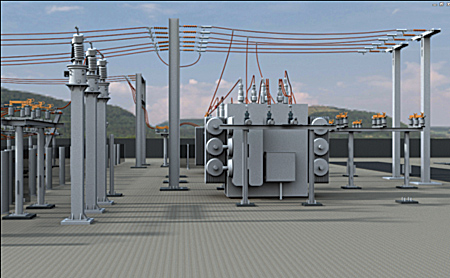
Modeling and design tools enable knowledge transfer and more rapid on-boarding of new personnel.
(Image courtesy of Automationforce)
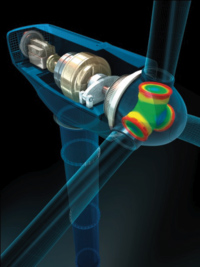
Rendering of a wind turbine illustrating
workflow progression and demonstrating
the capabilities of Autodesk’s Digital
Prototyping software products.
As with famous scientists, modeling, visualization, and design tools can also help utilities solve problems and balance numerous priorities. A whole new generation of tech-savvy young employees is coming on board, precisely when the depth of knowledge and experience of an older workforce needs to be retained in the face of numerous retirements.
As one research participant stated:
“The more tech savvy, younger newcomers have often been surprised to see less than the latest technology in place and tend to seek employment elsewhere. These younger employees increasingly feel less and less loyalty to their employers. Anyone who thinks the utility industry is immune to this is living in a dreamland because I’ve been seeing it at many utility companies. The newcomers are up on the latest technologies, and want to stay that way. They will move to other companies or industries if they do not feel they are staying up to date in their work by using the latest design technologies. They want to feel they are accomplishing something. They want to be challenged.”

The millennial generation differs to previous generations in communication style, in ideals about technology;
and in preference to merge gaming and 3-D experience with their careers. Old school is not always cool.
Rendering of a video game controller highlighting circuitry and components.
Rendered in Autodesk(R) 3ds Max(R) software.
Ultimately, as participants from leading utilities involved in McDonnell Group research indicated, the top priority when implementing has to be the utility personnel, not the IT solution. The solutions need to empower people to be successful. Participants in the McDonnell Group research made statements such as the following:
“Drawings need to communicate and translate into real work. This way you don’t get into those situations where the crews get out in the field and they cannot complete the work.”
“The biggest thing you need right now are tools that are functional and reliable, that support not just throughput but quality and also enable you to more quickly get new people up to speed – nothing can be achieved in the long run if you are not enabling your people.”
“The depth of our design solution is critical to meeting our company goals in electric distribution. With what we are implementing one of management’s key goals is to eliminate some of our older legacy software and get things more standardized.”
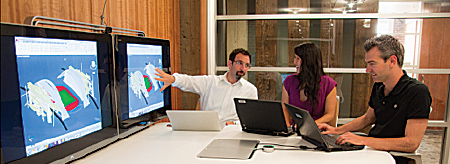
Modeling can help to improve collaboration and convey information bridging
the gap between engineer/designer and non-technical stakeholders
Key findings of The ‘Designing Operational Excellence’ study
A study completed in December 2012 by McDonnell Group, Designing Operational Excellence: Financial and Service Performance Improvements and the Role of Intelligent, Model-Based Design and Visualization Tools, surveyed a diverse mix of utility professionals, as shown in Figure 1.
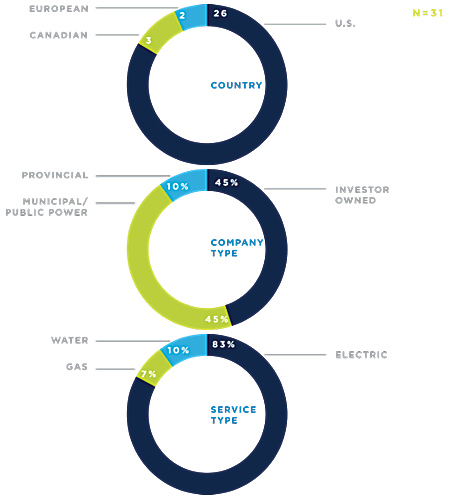
Figure 1
(Access the design study at www.aec-projects.com/mcdonnell-group-design-study)
In terms of the individual design groups within these utilities, the survey sample consisted of a broad and comprehensive mix of small, medium, and large design departments. Participants universally recognized the importance of the design function, both for meeting internal transmission, distribution, and substation department goals as well as for meeting overall company goals. Utilities represented in the sample are seeking to increase the uniformity and efficiency of workflows that employ data from design solutions across their current mix of WMS/OMS/EAM/ERP and GIS solutions.
All 31 participants recognized the key role of better design solutions, whether in distribution, transmission or substations.
Distribution system design teams are starting to increase their use of 3-D design tools, but currently remain at much lower usage levels for 3-D work compared to their counterparts in other areas of utility design work. Specifically, distribution design participants use 3-D design capabilities in only 15 percent of areas as shown in Figure 2, with substation more than double that amount (32%) and transmission usage levels of 3-D almost triple (41 %).
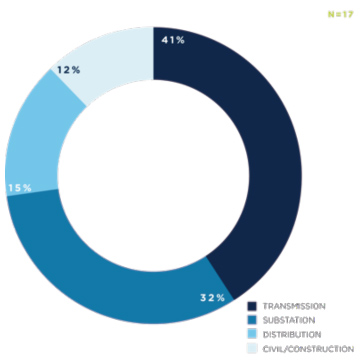
Figure 2
IN WHICH AREAS ARE YOU CURRENTLY USING 3-D DESIGN TOOLS FOR SOME OF YOUR DESIGN WORK?
(Access the design study at www.aec-projects.com/mcdonnell-group-design-study)
Demand for these tools is in part driven by the ability to see how designs will look in three dimensions and to rotate and analyze them from different perspectives. An example of the typical comment by substation and transmission design decision-makers regarding the value of 3-D involved the following areas of importance among others:
- Substation rebuilds in constrained environments
- Clearances being better understood
- Ability to use 3-D to enable third-party stakeholders as well as internal utility staff better visualize how prospective designs will look, in advance of finalizing the design options.
Although current usage levels of 3-D in distribution are lower, as shown in Figure 3, interest levels are high, spanning both overhead and underground distribution as well as smart grid initiatives and other aspects on the low voltage side of the grid (e.g. renewables and other distributed generation).
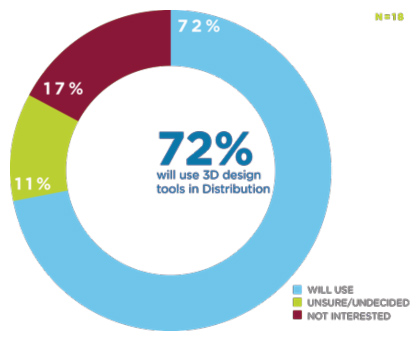
Figure 3
FOR ELECTRIC UTILITIES NOT CURRENTLY USING ANY 3-D DESIGN, MODELING AND VISUALIZATION
TOOLS IN DISTRIBUTION, ARE YOU INTERESTED IN MOVING TOWARD THE USE OF 3-D DESIGN TOOLS?
(Access the design study at www.aec-projects.com/mcdonnell-group-design-study)
Another one of the next great leaps in improvement initiatives described by utilities involves having 3-D visualization and modeling tools at the designer’s fingertips. Having 3-D tools enables a deeper understanding of how increasingly complex systems can be designed in a more coordinated fashion involving a more complex community of stakeholders, customers, and third party contractors.
“Helping everyone see prospective designs is of great value. For example, a couple of times a month we do a design presentation showing every design and what we intend to build. If you can put that in 3-D it suddenly becomes very real for the participants versus 2-D.”
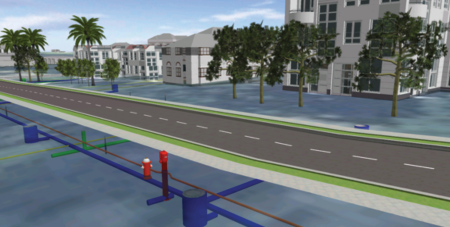
Visualizing existing assets in the context of the real world helps to provide enhanced
understanding of existing conditions data and improved coordination with internal and external
stakeholders. 3-D modeling of utility environments supports ‘Call before You Dig’ helping to prevent
expensive repairs or relocation projects, and better supporting safety.
(Data for 3-D model courtesy of Okaloosa Gas District)
Conclusion
Distribution system decisions are increasingly being driven by the need for greater accuracy and more robust processes to support real time updates and job tracking. The benefits of intelligent, model-based design and visualization tools are also leading to their deeper utilization to address large complex design jobs for transmission and substations and civil designers as well.
As mentioned, owing to the way software systems have evolved at utilities, the benefits being sought now are often part of a more comprehensive planning process, while earlier software systems may have brought benefits without a strong need to consider the overall impact.
The newer, intelligent model-based design tools are an important element of plans leading utilities are putting in place to find the optimal balance point between complex operational requirements, financial constraints, and reliability and customer service excellence goals.
There is a clear need to balance an increasingly dynamic set of constraints. Capital improvements to plant in service are requiring greater design tool utilization to better track projects and to collaborate in an environment where stakeholders, customers, and third party contractors as well as utility personnel need access to real-time information that must be accurate and reliable.
A valuable contribution to meeting these goals is being made by intelligent, model-based design and visualization tools and accompanying 3-D capabilities. The contribution being made by these tools is going to increase significantly in the future.
About the Author
 As Principal Strategy Consultant at McDonnell Group, Peter provides strategic consulting services, competitive market positioning and analysis, and support of subject matter input and content for research programs. Along with numerous enterprise software vendors and equipment manufacturers seeking to better position their utility product offerings, Peter has also worked with numerous electric, gas and water utilities providing consulting and benchmarking services. Peter earned a B.A. in philosophy from Vassar College, a B.S. in electrical engineering from Polytechnic University of NY, and an M.B.A. in marketing and finance from NYU Stern School of Business. Peter is a member of the IEEE PES. Please contact him at peter@themcdonnellgroup.com
As Principal Strategy Consultant at McDonnell Group, Peter provides strategic consulting services, competitive market positioning and analysis, and support of subject matter input and content for research programs. Along with numerous enterprise software vendors and equipment manufacturers seeking to better position their utility product offerings, Peter has also worked with numerous electric, gas and water utilities providing consulting and benchmarking services. Peter earned a B.A. in philosophy from Vassar College, a B.S. in electrical engineering from Polytechnic University of NY, and an M.B.A. in marketing and finance from NYU Stern School of Business. Peter is a member of the IEEE PES. Please contact him at peter@themcdonnellgroup.com
1 The DistribuTECH panel session, part of the Asset, Mobile and Information Management conference track, has related case studies by panelists from Duke Energy and Southern California Edison, along with McDonnell Group’s white paper detailing its research findings. All three are available at http://www.aec-projects.com/mcdonnell-group-design-study/
2 Hirshfield, Alan W. Eureka Man: The Life and Legacy of Archimedes. Walker Publishing Company, 2009 pp 5-6







